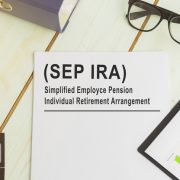FAQs About Self-Directed Traditional IRAs
The Traditional IRA is the oldest retirement account still available in the United States, and for good reason. It’s a straightforward way to save for retirement, enjoy tax savings, and ultimately build a retirement portfolio that you can rely on when it comes time to stop working. But do you know all there is to know about Self-Directed Traditional IRAs? You might be surprised. That’s why we put together this brief article that tackles some of the most frequently asked questions (FAQs) about Self-Directed Traditional IRAs.
What is a Self-Directed Traditional IRA?
A Traditional IRA is the first definition here, and as the oldest and most common retirement plan around, it’s a straightforward way to put aside money for retirement. Self-Directed Traditional IRAs work on a tax-deferred basis, meaning that you can put aside pre-tax money for these accounts, assuming that you follow all of the appropriate rules. Self-direction refers to the style of investing that you may use when working with a Self-Directed IRA administration firm like American IRA. In self-directing, you’ll work through a Self-Directed IRA administrator who administers the account on your behalf, carrying out buy and sell orders so you can utilize the full potential of the account.
Why Should You Consider a Self-Directed Account?
There are two components to answering this question, just as there are above:
- Why a Traditional IRA? It depends on your investing strategy. Traditional IRAs are often cast as alternatives to Roth IRAs, which use after-tax money for investors who believe that their tax rate in retirement will be higher due to a higher income. But if the opposite is the case, then a Traditional IRA may make more sense. You should consult with a tax professional for feedback on what might be the right choice for you.
- Why self-direction? Self-direction gives you the opportunity to invest in a wide range of alternative asset classes like real estate, private stocks, and even precious metals. Using a Self-Directed Traditional IRA means you can use tax protections with an IRA to invest in those alternative asset classes—or build a portfolio that’s of your own design. This gives you plenty of options for retirement investing that go beyond what an ordinary account can accomplish.
What are the Benefits of a Self-Directed Traditional IRA?
Why a Traditional IRA over a Roth IRA, for example? In some cases, you may not be eligible for a Roth IRA, which means that you may have to put your retirement contributions toward a Traditional IRA instead.
There is also the main trait of the Traditional IRA, which says that you can put aside tax-deferred money for retirement. This means that valid contributions to a Traditional IRA will be deductible from your overall income. This money then grows within the account—and you’ll only pay taxes on it when you take it out, either early (before retirement age, which incurs extra fees) or upon hitting retirement age. This gives you some flexibility to save money on your current tax returns. Additionally, you will have the protections that come with a Self-Directed Traditional IRA over time.
Do you want to start investing for retirement? It may be time to consider Self-Directed IRAs as a potential option. If you’ve found these answers interesting, keep reading up on IRAs and learn what you can do when you work with a Self-Directed IRA administration firm.
Interested in learning more about Self-Directed IRAs? Contact American IRA, LLC at 866-7500-IRA (472) for a free consultation. Download our free guides or visit us online at https://americanira.com/.







